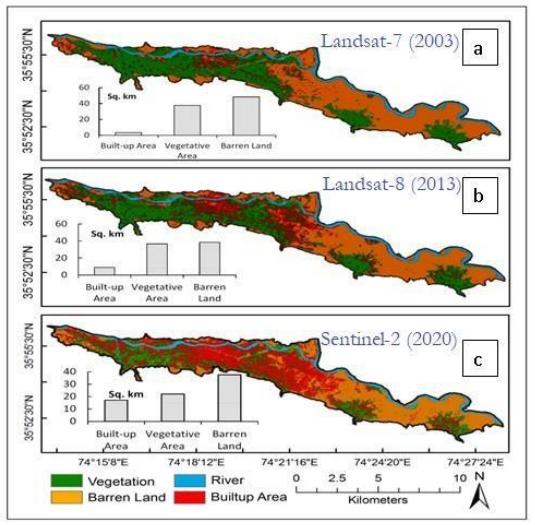Assessment of Temporal Changes in Gilgit City using Multisource Datasets: Way forward up to 2030
Keywords:
LULC, temporal analysis of Gilgit city, Landuse classes in Gilgit, LandcoverAbstract
Urbanization has become a hot issue in context of environmental and socio-political scenarios which has become a point of discussion at every forum globally. The aims of this research was to detect the changes in land use and land cover in Gilgit city by using remotely sensed data. Comparative and temporal analysis was done to detect the changes in built-up area, vegetation cover, water bodies and barren land from year 2003 to 2020 by taking satellite images of the year 2003, 2013 and 2020 the result of overall changes in area for the three classes: build up land, vegetation cover and barren land. From the year 2003 built up land was 3.37 sq.km, water body was 4.01 sq.km, vegetation cover 19.83 sq.km and barren land was 25.37 sq.km. A significant change was observed in area of these classes in 2013, where an increase in builtup was observed up to9 sq.km and water body covered 4.01 sq.km which was almost constant as compared to 2003 while vegetation cover declined to 19.43 sq.km and the barren land was also declined to 20.33 sq.km. The time span from 2013 to 2020 shows a change in buildup land which was observed increased by17 sq.km.


















